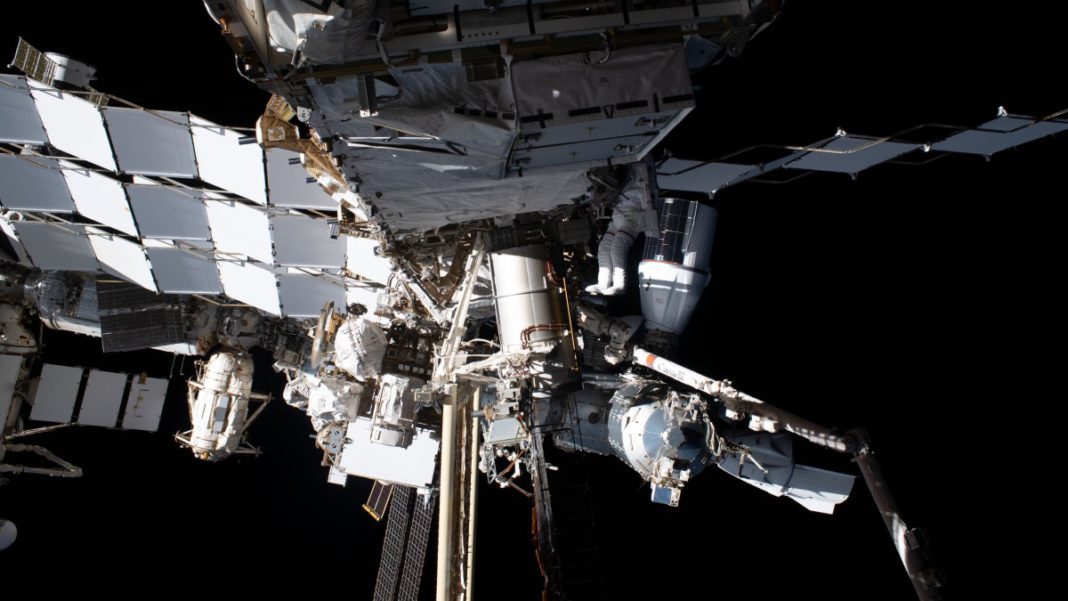UNITED STATES: In a daring spacewalk on Wednesday, October 25, two cosmonauts aboard the International Space Station (ISS) confronted a coolant leak that had been detected emanating from an external radiator earlier in the month. Oleg Kononenko, near the growing “blob” of pooling ammonia, had one of his tethers contaminated, prompting it to be secured in a bag and left outside the station.
Initiating the extravehicular activity (EVA) at 1:49 p.m. EDT, Kononenko and his fellow Expedition 70 spacewalker, Nikolai Chub, both of the Russian federal space corporation Roscosmos, began by isolating and photographing the radiator.
The radiator, a backup to the main body’s temperature regulator inside Russia’s Nauka multipurpose laboratory module, was observed leaking coolant on October 9. They meticulously configured valves to cut off the radiator from its ammonia supply.
Upon completion of this task, Kononenko reported observing numerous small holes in the radiator’s panels. “The holes have very even edges, like they’ve been drilled through,” he radioed to Moscow Mission Control. “There are lots of them. They are spread chaotically.”
The formation of the “blob” was attributed to residual ammonia that was disturbed during valve closure. The cosmonauts were prepared for this eventuality, equipped with tissues and cloths to ensure they did not carry any of the toxic material back into the space station.
Data collected during the spacewalk will be invaluable for Russian engineers on the ground, aiding in identifying the cause of the leak and devising steps for future radiator use.
In addition to the radiator inspection, Kononenko and Chub also installed a synthetic radar communications system and deployed a nanosatellite to test solar sail technology. The radar, a vital tool for Earth’s environmental monitoring, was the first science payload attached to Nauka’s exterior.
The nanosatellite, designed by the Bauman Moscow State Technical University, aimed to test experimental solar sail deployment. Despite some coaxing, the solar wings did not extend as planned.
The EVA concluded after 7 hours and 41 minutes, with the hatch to the Poisk module airlock sealed at 9:30 p.m. EDT. This marked the 268th spacewalk in support of ISS assembly, maintenance, and upgrades. It was Chub’s inaugural spacewalk and Kononenko’s sixth, bringing his total spacewalk time to an impressive 41 hours and 43 minutes.
Also Read: NASA to Develop a Nuclear-Powered Lander for Titan



